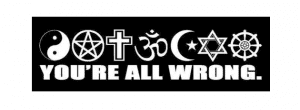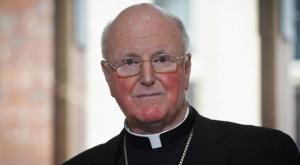Jerusalem, my home for about 10 days, can look like some kind of costume drama, especially down in the old city. Muslim women in headscarves, or for that matter more conservative Jewish women in headscarves, are just a part. Military uniforms of various sorts are present – albeit discreetly for the most part. And various groups of tourists from around the world bring their own fashion sensibilities. But the real show is down by the wailing wall, where various conservative Jewish groups, almost all originating in Eastern Europe, come to pray. Hats are one critical part of the costume, and range from black fedoras to bowlers to even more exotic formulations – the most stunning of which makes its wearers look like their head is stuck in a huge fur tire. (I have counted 7 distinct types, without particularly searching) Hats are matched various forms of overcoat (black or brown as a rule) and everything from slacks to knee buckle breeches over knee socks.
Why? Well essentially these costumes designate specific rabbinic traditions, and were usually the village costume of a group of Jewish villages in Poland or Ukraine or Russia where an influential rabbi’s daily wear became the identifying mark of his disciples.
Of course costumes are not unknown as identifiers in other religious traditions. Indeed virtually all religious traditions have distinctive costumes to designate rank in the religious hierarchy, or particular function in the religious community. If some of these appear ridiculous it is most likely because they don’t represent our religious tradition. One can see Catholic tourists here pointing at the fur wheels who wouldn’t think twice about a man wearing a mitre, or their own priest with a piece of white plastic wrapped around his neck. Out of context a Methodist bishop in his or her purple clergy shirt and conservative gray trousers/skirt and jacket is just as strange. Flung into a group of orthodox clergy in black robes and upside down stovepipe hats our bishops would look like wraiths, a gray and fading episcopal obscurity.
What amazes is how these distinctive identifiers persist, particularly those, like the ultra-orthdox in Israel, that are both thousands and miles and sometimes centuries from their origins. And they tell us that quite often religion isn’t merely a set of beliefs and practices which people hold to suit their personal spiritual needs. It is a powerful form of identity, placing a person firmly in a community and that community firmly in a larger context of social experience.
This is why so much is at stake in inter-religious dialogue. We are never just talking about what people believe. We are talking about who they are.
And conversely that is why inter-religious dialogue is related to political discourse. A distinctive public costume is a clear indicator of a distinctive sense of social, and thus political location. There are political implications hidden in those hats, and shirts, and scarves. It happens that American protestants are so divided (and note, virtually without costume) that this may not be true for us. We shouldn’t forget that it is true for others.












